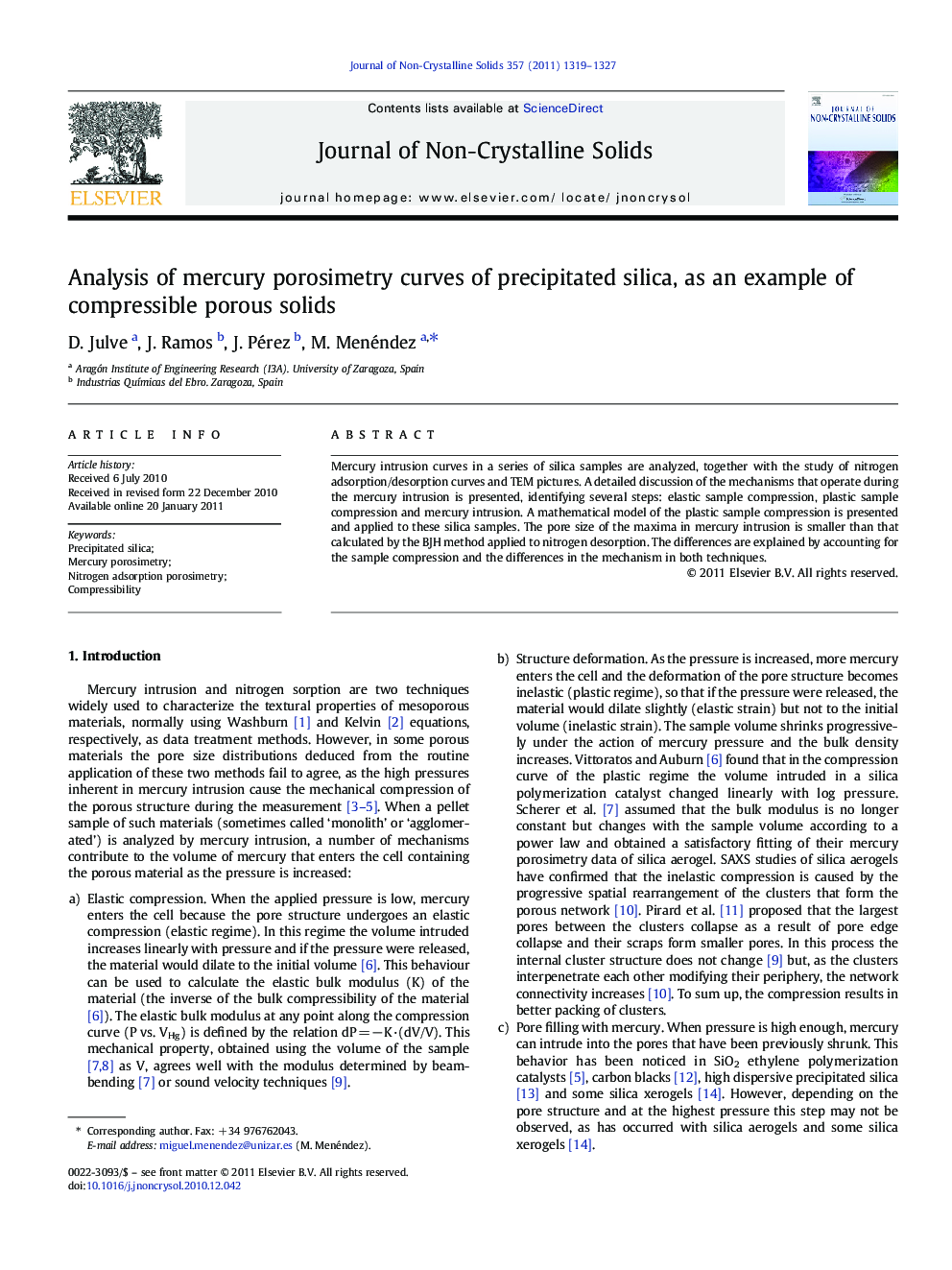| Article ID | Journal | Published Year | Pages | File Type |
|---|---|---|---|---|
| 1483011 | Journal of Non-Crystalline Solids | 2011 | 9 Pages |
Mercury intrusion curves in a series of silica samples are analyzed, together with the study of nitrogen adsorption/desorption curves and TEM pictures. A detailed discussion of the mechanisms that operate during the mercury intrusion is presented, identifying several steps: elastic sample compression, plastic sample compression and mercury intrusion. A mathematical model of the plastic sample compression is presented and applied to these silica samples. The pore size of the maxima in mercury intrusion is smaller than that calculated by the BJH method applied to nitrogen desorption. The differences are explained by accounting for the sample compression and the differences in the mechanism in both techniques.
Research Highlights► We prepared a series of precipitated silicas. ► We obtained mercury and nitrogen adsorption porosimetries of them. ► We showed the differences in pore volume distribution by both techniques. ► We present an approach based on the study of sample compressibility. ► This approach provides information on interparticular space and pore volume. ► This approach provides information on material stiffness.
